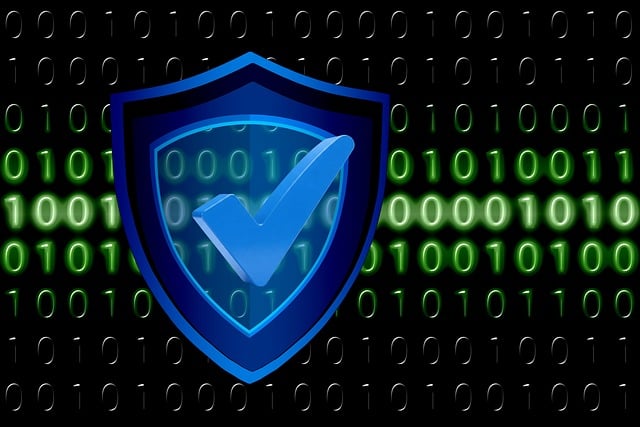In today's digital age, organizations must secure sensitive information and facilities. Customizable access levels, achieved through controlled entry systems, replace one-size-fits-all security protocols by granting specific permissions to employees or roles. This enhances security, promotes compliance, simplifies management, and protects data while maintaining operational efficiency. Implementing controlled entry systems involves assessing security needs, selecting appropriate technology (like biometric scanners), designing access control zones, installing hardware, configuring software for user permissions, and dynamically managing user accounts. Case studies in tech and healthcare demonstrate the benefits of customizable access levels, including improved safety and efficiency.
In today’s dynamic business landscape, ensuring secure access for personnel is paramount. Customizable access levels for security offer a game-changing solution. This comprehensive guide explores the rising necessity of tailored access control, providing a step-by-step implementation process for effective controlled entry systems. We delve into significant benefits and enhancements, backed by real-world case studies, demonstrating how customizable access levels fortify overall security. Discover how this approach revolutionizes management, fostering a secure and efficient working environment.
Understanding the Need for Customized Access Control
In today’s digital era, securing sensitive information and facilities is paramount for any organization. One key aspect that often gets overlooked is the importance of customizable access levels within security protocols. Traditional, one-size-fits-all approaches to controlled entry systems can be inefficient and cumbersome, failing to cater to the diverse needs of different departments and personnel.
Every business has unique requirements when it comes to who has access to what. Customizable access control allows organizations to define specific permissions for each employee or role, ensuring that sensitive data and areas are protected while enabling efficient operations. This tailored approach enhances security, promotes compliance, and simplifies management, ultimately fostering a safer and more productive work environment.
Implementing Controlled Entry Systems: A Step-by-Step Guide
Implementing Controlled Entry Systems: A Step-by-Step Guide
1. Assess Security Needs: Begin by evaluating your facility and identifying areas that require enhanced security. Determine sensitive areas, personnel access points, and potential risks to create a comprehensive security plan. This step involves understanding the unique needs of your organization and aligning them with effective controlled entry system design.
2. Choose Access Control Technology: Select suitable technology for your controlled entry systems based on your assessment. Options include biometric scanners (fingerprint or facial recognition), keycard readers, access codes, or a combination thereof. Consider factors like ease of use, cost-effectiveness, and the level of security required. Each technology offers distinct advantages, so choosing the right fit ensures efficient access management while maintaining robust security protocols.
3. Design Access Control Zones: Create zones within your facility, categorizing areas based on access levels. Define restricted zones for sensitive operations and general access areas. This design allows for precise control over who enters specific parts of the building. Implement signage to guide personnel, ensuring everyone understands their permitted access.
4. Install Hardware and Software: Procure and install hardware like door sensors, locks, readers, and controllers. Configure software to manage user permissions, track access logs, and generate alerts upon unauthorized attempts. Ensure the system is integrated seamlessly with your existing security infrastructure for comprehensive monitoring.
5. Create and Manage User Accounts: Establish user accounts aligned with individual roles and responsibilities. Grant or restrict access accordingly using the controlled entry system’s management tools. Regularly review and update access permissions as roles change, ensuring a dynamic and responsive security approach.
Benefits and Security Enhancements with Customizable Levels
Customizable access levels offer significant advantages for personnel security by providing a tailored and robust security framework. Organizations can define specific permissions for different roles, ensuring that only authorized individuals gain entry to sensitive areas. This granular control enhances security as it limits unauthorized access, reducing potential risks and breaches. With customizable levels, companies can implement role-based access controls (RBAC), where access privileges are assigned based on job functions, minimizing the exposure of confidential data.
Implementing controlled entry systems with adjustable settings allows for a dynamic environment where security measures align with evolving business needs. This flexibility enables efficient management of physical access, improving operational efficiency while maintaining strict security protocols. By leveraging customizable access levels, organizations can create a secure and adaptable infrastructure, fostering a safe workplace without compromising on functionality or productivity.
Case Studies: Successful Rollout of Personalized Access Management
In recent years, numerous organizations have successfully implemented customizable access levels for personnel security, enhancing their overall safety and efficiency. These case studies demonstrate how tailored access management can mitigate risks, streamline operations, and foster a more secure environment. For instance, a large tech company adopted advanced controlled entry systems, allowing them to grant or restrict access based on individual roles and responsibilities. This granular approach ensured that only authorized personnel could enter sensitive areas, significantly reducing unauthorized access attempts.
Another notable example involves a healthcare facility that implemented personalized access controls for patient privacy and staff efficiency. By leveraging biometric authentication and role-based permissions, they achieved seamless entry for medical professionals while maintaining strict security protocols. This tailored system not only improved patient safety but also optimized workflow, with staff members effortlessly navigating the facility without compromising security. These successful rollouts underscore the effectiveness of customizable access management in diverse sectors, highlighting its potential to revolutionize personnel security.
In conclusion, implementing customizable access levels through controlled entry systems offers a robust solution for enhancing personnel security. By understanding the need for tailored access control, following a structured rollout guide, and recognizing the significant benefits and enhancements, organizations can create secure environments that protect sensitive areas while fostering efficient operations. Case studies demonstrate the successful integration of personalized access management, highlighting the transformative power of controlled entry systems in today’s digital era.
